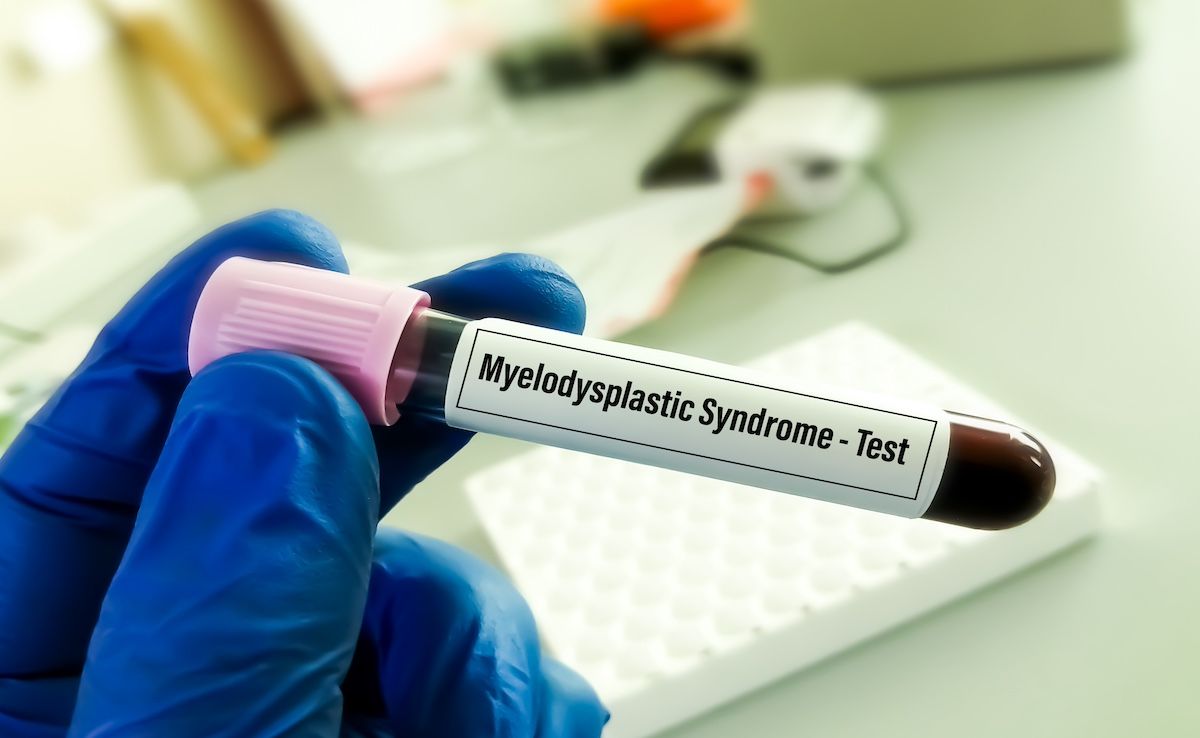- Center on Health Equity & Access
- Clinical
- Health Care Cost
- Health Care Delivery
- Insurance
- Policy
- Technology
- Value-Based Care
Study Identifies Risk Factors for Progression From Low-Risk MDS
The findings show most patients with low-risk myelodysplastic syndrome (MDS) will die before progression.
A new analysis of nearly 2000 patients with low-risk myelodysplastic syndrome (MDS) has identified several risk factors for progression, including low absolute neutrophil count, low platelet count, and high bone marrow blasts.
The study, which was published in the journal Haematologica, could help clinicians better tailor treatments to individual patients based on their individual risk factors.1
The 2012 revision to the International Prognostic Scoring System (IPSS) for MDS classifies patients with MDS into 5 categories, ranging from very-low- to very-high risk. This initial classification can help guide physicians and patients in making treatment decisions, noted the study’s authors.
“In low-risk disease, the aim of therapy is to improve cytopenias in patients with anemia, neutropenia, and/or thrombocytopenia in order to improve quality of life and prevent complications from cytopenias in an attempt to prolong overall survival,” they wrote.
However, low risk does not mean no risk, they noted.
Among patients with low-risk MDS, this study identified several risk factors for disease progression: male gender, low absolute neutrophil count, low platelet count, high bone marrow blasts, multilineage dysplasia, and a lack of ring sideroblasts. | Image Credit: Saiful52-stock.adobe.com

Approximately 30% of people with MDS will eventually progress to acute myeloid leukemia (AML), and an estimated 60% to 80% of cases of secondary AML are believed to trace back to antecedent MDS, according to a 2020 study.2 Moreover, a study from 2015 suggested that people with AML with antecedent myeloid disorders who undergo intensive therapy have lower complete remission rates and inferior survival.3
Yet, the authors said that, to date, little is understood about which patients initially diagnosed with low-risk MDS are likely to progress to either high-risk disease or AML. They therefore decided to analyze a cohort of 1914 patients who were diagnosed with low-risk MDS in order to see which patient characteristics corresponded with outcomes. All the patients in the analysis were classified using the 2012 revised IPSS and all were included in a database of MDS patients maintained by the Moffitt Cancer Center.
The authors found that most patients (1300; 68%) remained in the low-risk category.
“The majority of (low-risk) MDS patients do not actually progress during their life span,” they wrote.
However, 317 patients (16.5%) progressed to high-risk MDS but did not experience transformation to AML, 124 patients (6.5%) progressed from low-risk to high-risk MDS and then to AML, and 173 patients (9%) progressed directly from low-risk MDS to AML. In the 2 groups of patients who progressed to AML, the median time to progression was 29 months; in the group that progressed to high-risk MDS but not to AML, the median time to progression was 22 months.
At a median follow-up of 99 months, patients in the nonprogression group had a median overall survival (OS) of 80.7 months, and those who progressed to high-risk MDS had a median OS of 61.2 months. Among patients eventually progressing to high-risk disease and then AML, the median OS was 48.3 months. In the group that progressed directly from low-risk MDS to AML, the median OS was 42.8 months. Among those patients who died within 2 years of diagnosis without MDS progression (171 patients), a documented cause of death was only available in 61 cases. Of those, 18 patients died from cytopenia and MDS-related complications.
In terms of risk factors, the authors identified male gender, low absolute neutrophil count, low platelet count, high bone marrow blasts, ferritin exceeding 1000 mcg/L, albumin levels below 3.5 g/dL, multilineage dysplasia, and a lack of ring sideroblasts as risk factors for progression.
Forty-nine patients had marked bone marrow fibrosis, and 18% of those patients progressed directly to AML, the investigators noted.
They also identified a number of somatic mutations associated with progression risk. Mutations of SRSF2 and NRASwere linked with progression to AML, whether direct or indirect; mutations of IDH1, IDH2, and NPM1 were associated with progression directly to AML; and ASXL1, TP53, RUNX1, and CBL were more common in patients who experienced progression to high-risk disease but not to AML.Mutations in SF3B1 were associated with a lower risk of progression.
The investigators said more research is warranted to better understand how treating cytopenias in patients with comorbidities and alleviating transfusion burden might impact patient outcomes. More broadly, they said identifying patients in the low-risk category who are at a higher risk of progression or death will be “crucial to tailor therapy accordingly.”
References
1. Jain AG, Ball S, Aguirre L, et al. Patterns of lower risk myelodysplastic syndrome progression: factors predicting progression to high-risk myelodysplastic syndrome and acute myeloid leukemia. Haematologica. 2024;109(7):2157-2164. doi:10.3324/haematol.2023.283661
2. Menssen AJ, Walter MJ. Genetics of progression from MDS to secondary leukemia. Blood. 2020;136(1):50-60. doi:10.1182/blood.2019000942
3. Granfeldt Østgård LS, Medeiros BC, Sengeløv H, et al. Epidemiology and clinical significance of secondary and therapy-related acute myeloid leukemia: a national population-based cohort study. J Clin Oncol. 2015;33(31):3641-3649. doi:10.1200/JCO.2014.60.0890
